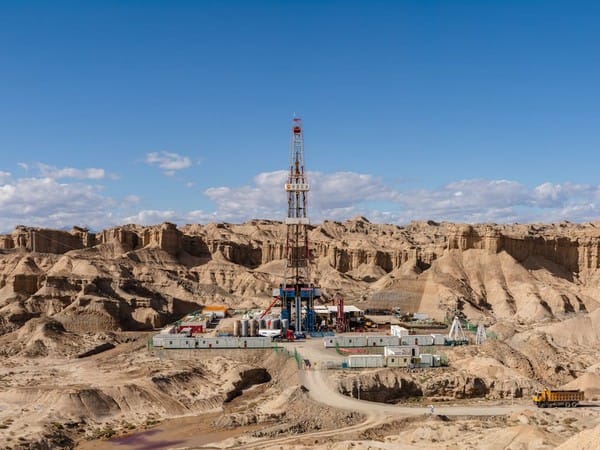New Delhi [India], July 15 (ANI): Deemed as crucial for India, all five Central Asian countries are abundantly endowed with natural and mineral resources. Kazakhstan possesses large, commercially viable quantities of various minerals including coal, oil, gas, uranium, gold, lead, zinc, iron ore, tin, copper, manganese, chromite, bauxite, and more.
Turkmenistan holds the world’s fourth-largest natural gas reserves and also has significant deposits of cotton, uranium, petroleum, salt, and sulfur. Uzbekistan is rich in gas, uranium, cotton, silver, and gold.
Both Tajikistan and Kyrgyzstan have considerable fresh water supplies with untapped potential. Additionally, Kyrgyzstan has notable reserves of gold, uranium, mercury, and lead. The exploitation of these resources varies across the five countries.
During the Second India-Central Asia NSAs meeting, India proposed creating an India-Central Asia Rare Earths Forum. This initiative aims to strengthen collaboration in the rare earth and strategic mineral sectors, promoting partnerships founded on mutual benefit, transparency, and long-term objectives.
These minerals are not just essential for the present time, they also hold the key to a brighter future. They drive the transition towards a low-carbon economy and reduce dependence on fossil fuels, signalling a hopeful path to sustainability.
Dependence on other countries for critical minerals poses a significant national security risk. Ensuring a reliable and secure supply of these minerals is vital for maintaining military strength, defence capabilities, and infrastructure resilience. Promoting domestic production and diversifying supply chains can mitigate vulnerability to international tensions and trade conflicts.
Critical minerals are fundamental to economic growth and competitiveness, fueling innovation, industrial expansion, and job creation. Industries reliant on these minerals are the backbone of economic activity across various sectors, including manufacturing, technology, energy, and transportation.
Central Asia is a treasure trove of critical minerals, holding a substantial share of the world’s essential resources. This region possesses 38.6 per cent of the world’s manganese ore, 30.07 per cent of its chromium, 20 per cent of its lead, 12.6 per cent of its zinc, and 8.7 per cent of its titanium, among other valuable minerals, making it a strategic powerhouse.
In September, Kazakhstan President Kassym-Jomart Tokayev described critical minerals as the “new oil.” The vast mineral reserves in Central Asia have attracted major global powers, leading to complex geopolitical dynamics and competition. The presence of these minerals underscores their global importance and highlights the need for strategic action.
India faces an energy shortfall despite its abundance of energy and natural resources, particularly in certain regions. The potential for collaboration between India and Central Asia is clear. However, a significant challenge remains in efficiently transporting these resources from landlocked areas to India.
The Turkmenistan-Afghanistan-Pakistan-India (TAPI) pipeline initiative aims to tackle this issue. Additionally, India has been importing yellowcake for its nuclear plants from Kazakhstan since 2009.
If rare earth elements (REEs) are considered the crude oil of the 21st century, then Central Asia and Mongolia can be likened to the Saudi Arabia of these essential minerals.
Located at the heart of the Eurasian landmass and bordered by Russia, China, and the Indian subcontinent, this region includes approximately 80 million people across six countries (Kazakhstan, Kyrgyzstan, Mongolia, Tajikistan, Turkmenistan, and Uzbekistan) and covers an area about half the size of Europe. According to the United States Geological Survey, it is also richly endowed with REEs.
Central Asian nations are currently shifting towards cleaner and more sustainable energy alternatives to decrease their reliance on traditional energy sources. This global competition over critical minerals will bring increased investments and essential expertise to these countries, facilitating the development of their sustainable energy sector and resulting in significant benefits for their economies and the environment.
Furthermore, the responsible extraction and development of these resources could be transformative, contributing to economic growth, industrial development, and energy security in Central Asia and beyond.
The potential benefits are immense, offering a promising future. However, the challenges are equally significant. Managing resource extraction sustainably, minimizing environmental impacts, ensuring equitable distribution of benefits to local communities, and securing a sustainable and equitable future is crucial.
The urgency of this call cannot be overstated, as responsible resource management is vital not just for economic growth, but for the long-term stability and prosperity of the region.
If rare earth elements (REEs) are the crude oil of the 21st century, then Central Asia and Mongolia might be considered the next Saudi Arabia.
Positioned at the centre of the Eurasian landmass, bordered by Russia, China, and the Indian subcontinent, this region includes roughly 80 million people across six countries (Kazakhstan, Kyrgyzstan, Mongolia, Tajikistan, Turkmenistan, and Uzbekistan) and covers an area of about half the size of Europe. Additionally, according to the United States Geological Survey, it is richly endowed with REEs.
(Dr. Chandan Kumar, PhD in Buddhist History, is a young scholar. He is working as an Assistant Professor, at the Department of History, Satyawati College, University of Delhi). (ANI)
This report is auto-generated from ANI news service. ThePrint holds no responsibility for its content.






